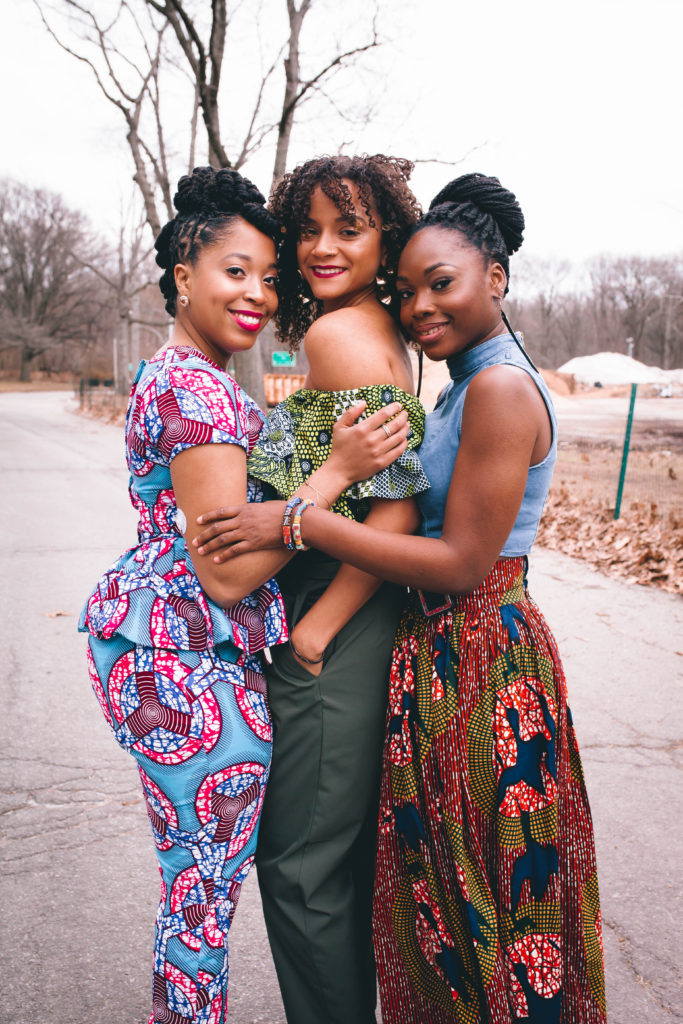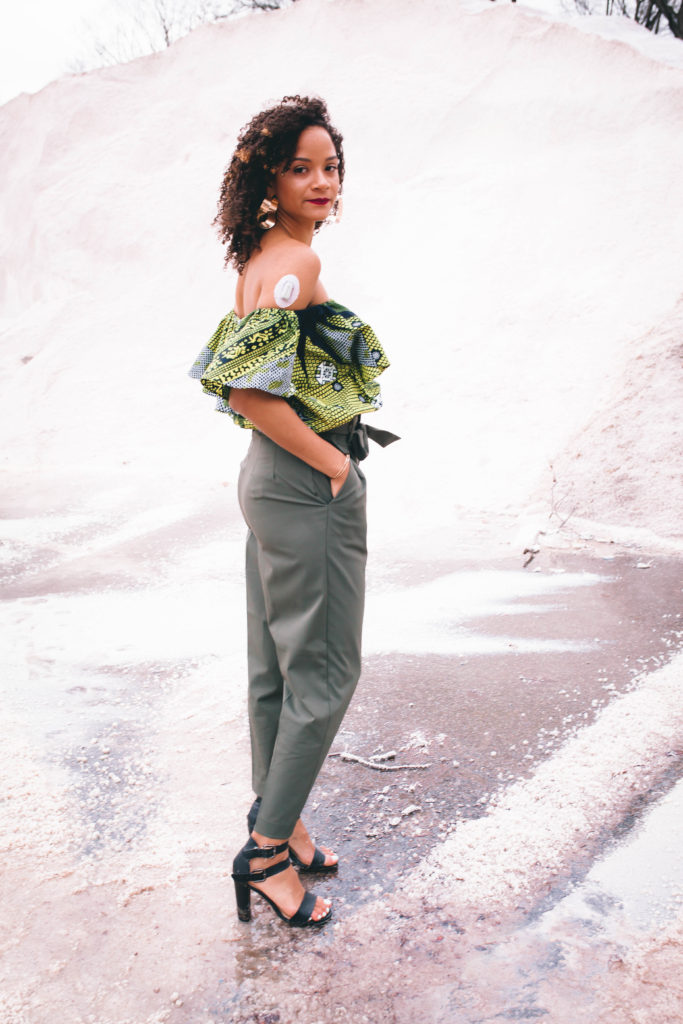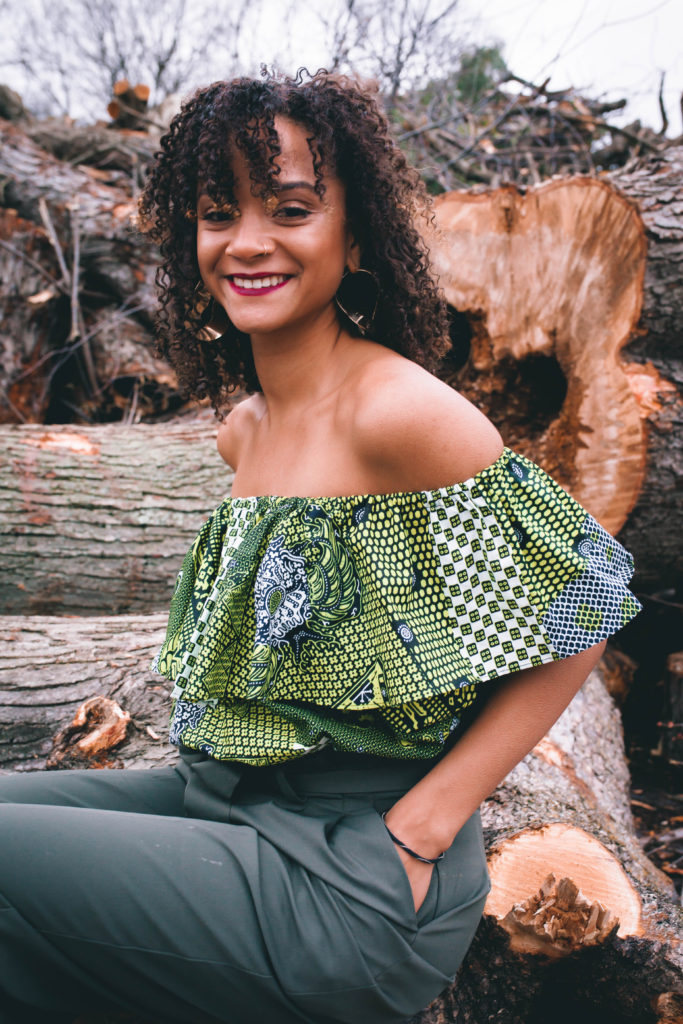Diabetic on the Margin: Aisha
“I spent almost my entire life as a type 1 diabetic (15 years) not seeing myself. Furthermore, as a woman, especially a woman of color, we’re taught not to take up space. And as a diabetic, we’re trained to be strong… to not be afraid in the face of life or death situations.” –Aisha, T1D for 15 years
These passages were shared with me by Aisha, and edited for length and clarity. Photography by Alfred Sarpeh of Royal Light Photography.
Diagnosis Story:
Much of my diagnosis story is a bit of a blur. I had all the usual signs, constant thirst, frequent urination, fatigue, etc. Many of the health care professionals in my life noticed that something had been off and encouraged my mom to take me to the doctor. What I thought would be a regular check-up resulted in a diagnosis that would change the course of my life forever. I was ten and it was a few days shy of Valentine’s Day. I remember finishing my lunch; Top Ramen with a Capri-Sun complete with a handful of Necco heart candies before heading to the doctor’s office. After a series of tests and a blood glucose level of 438 mg/dl, I was immediately diagnosed with type 1 diabetes and rushed to the ER. I spent a week in that hospital, but I remember it feeling like years. What followed was a whirlwind of appointments, injections and lessons on nutrition. I remember being too young to understand the gravity of the situation, but certainly aware that my life had been forever altered. I also remember promising myself that I would not let diabetes stop me from achieving any of my grandest dreams (which at that time, was to become a WNBA player and travel to Guyana to visit my grandmother… a trip that my family had been planning for awhile). Today, I’ve far surpassed anything I could have imagined for myself. I remind myself daily, to continue not allowing my diagnosis to stop me.
What did participating in this project mean to you?
I spent almost my entire life as a type 1 diabetic (15 years) not seeing myself. Furthermore, as a woman, especially a woman of color, we’re taught to not take up space. And as a diabetic, we’re trained to be strong– to not be afraid in the face of life or death situations. So I spent much of my lifetime, continuing to move silently in the world. I tried to fit in, hiding my battle wounds or medical devices. I stayed silent about my experience, my pain or my sadness or the ways in which diabetes is linked to my anxiety or mental health. Every part of my identity taught me that in the face of adversity, I should keep going. I should not dare take up space or be a burden in any way. Taking these photos did the opposite of everything I spent most of my life doing. I was no longer silent. I took up space, staking claim in the shared experience of living with type 1 diabetes. Collectively, as women of color we showed off our strength and courage and made visible what was previously invisible for so long.
What value (if any) do you see in connecting in real life with other diabetics (especially those of color?)
Until recently, very rarely, if at all, did I connect with type 1 diabetics in real life. As a kid, I would go to diabetes camps or youth events for type 1 diabetics and while it always felt nice to share in the collective experience of carb counting, taking insulin or sharing low blood sugar snacks, these moments felt isolating. Camps were predominantly white, meaning rarely did I see people that looked like me. My dreads and brown skin often left me feeling marginalized. Eventually, I stopped going to these diabetes-related gatherings. I also stopped seeking out solidarity (as a type 1 diabetic) and instead, dealt with things on my own. I didn’t see myself in the JDRF campaigns, at the charity walks or on any platforms for type 1 diabetics. It wasn’t until my 10th anniversary of being diagnosed with diabetes that I began to feel incredibly isolated and alone in my struggles. So, I took to social media, searching for hashtags #t1dStrong and #diabadass to begin to reaffirm my experience. While I quickly found myself laughing at diabetic memes and reading them to my partner or forwarding them to family, I realized that though my loved ones were close to my daily experience, they would never truly understand. I needed support from diabetics in real life. I decided to join Meetup groups, organized a JDRF walk and sought out platforms that might host events to connect in person. That’s where I met other diabetics of color and laughed at what it meant to carb count for roti, peas and rice and curry chicken and also how it truly felt to live on the margin, as a woman, a woman of color and as a type 1 diabetic. For once, I felt less isolated in my varied lived experiences. I finally felt affirmed.












Alright now!!!!
Beautiful. Keep on sharing!!
Thank you for the encouraging message!